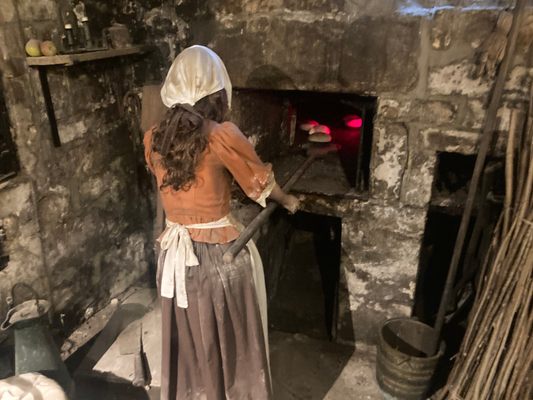About
Sally Lunn’s Historic Eating House & Museum is situated in the town of Bath, England, in one of its oldest homes. As soon as you duck inside, its age becomes apparent. Vibrant wallpaper covers oddly-angled walls and some doorways require stooping. This vintage place is famed for its namesake pastry: the Sally Lunn Bunn.
These "bunns" are a category unto its own. Denser than a brioche and lighter than a cake, the yeasted breads can be eaten with sweet or savory toppings, or just by themselves.
The restaurant proudly claims to have been the home of the "real" Sally Lunn. The story goes that Solange Luyon, a Huguenot refugee and baker, settled in the town in 1680 and began selling her breads, which quickly brought her both fame and a new Anglicized name, Sally Lunn.
But another theory is that the Sally Lunn bunns got their moniker from a roll of French persuasion, allegedly named for its golden exterior and white interior: that is, soleilune. Arguments over the true origins of the bread and the name made food historian Alan Davidson call the pastry "a major enigma for food historians."
For such a local specialty, the Sally Lunn has enjoyed surprisingly widespread fame. This is in large part due to Bath's history as a spa town, renowned for its hot thermal waters. Sally Lunn's specialty found fans amongst visitors, who included it in cookbooks well into the 19th century.
The bunns themselves are available in the restaurant, where they come toasted, made into French toast, or covered in smoked salmon and salt beef. They're available in beautiful printed boxes from the store in the basement museum, which is also of interest. A mannequin in period costume pulls fake bread out of the building's ancient oven, and stalactites hang from the ceiling, created by the region's famous mineral waters. An exhibit near the register shows evidence of how the building's site has been occupied since at least the Roman era, long before Sally and her bunns.
Related Tags
Know Before You Go
Sally Lunn's is open for breakfast, lunch, and dinner, but also sells bunns to go.
The museum consists of two small rooms. One with a display of a kitchen, the other is the gift shop where the buns are sold. There is also a window that looks out onto an excavation of Roman ruins.
Community Contributors
Added By
Published
August 5, 2022






































































